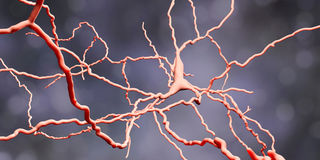Personality
Evolution of the pre-morbid schizophrenia construct
Schizotypy is one of the most ubiquitous pathological constructs in psychiatry.
Posted December 31, 2019 Reviewed by Devon Frye
Arguably, the holy grail in psychiatric research is the search for the schizophrenia gene. This severe mental disorder is heritable. The biological relatives of individuals with schizophrenia have a higher risk of developing schizophrenia as compared to individuals in the general population who are not biological relatives of individuals with schizophrenia.

Since the turn of the 20th century, the construct of a pre-morbid, schizophrenia-like constellation of personality traits has been described and explained. Consider its most recent manifestations as a Cluster A Personality Disorder (Paranoid Personality Disorder, Schizoid Personality Disorder, and Schizotypal Personality Disorder) or a related pathological construct coined by Paul Meehl as "schizotypy." Meehl believed that schizotypic individuals were "psychosis-prone" and described an identifiable phenotype that belied an underlying unique, identifiable genotype which causes both schizotypy (pre-morbid personality) and—depending on stressors or other genetic factors—schizophrenia. In other words, Meehl coined the term schizotypy to refer to the phenotypic (behavioral expression) of the gene that puts people at risk for schizophrenia.

Schizotypy Explained
Meehl identified a cluster of traits, such as social withdrawal, interpersonal fears, feelings of detachment, apathy, as well as having bizarre beliefs and unusual perceptions, that comprise schizotypy. The symptoms of schizophrenia have long been categorized into separate groups: (a) positive symptoms, such as hallucinations and delusions (e.g., paranoid fears), as well as (b) negative symptoms, such as social isolation, flat affect, and withdrawal. Accordingly, conceptualizations of schizotypy have subdivided the construct into two distinctive categories: positive schizotypy and negative schizotypy.
Extant research on schizotypy exists. Much prior research on schizotypy has focused on the assessment of positive and negative schizotypy—conceptualized as psychosis-proneness—in college-student samples. Researchers examined the predictive validity of the construct of schizotypy with a well-known measure, the Chapman Scales. The Chapman Scales were originally designed to assess elements of Meehl’s construct, schizotypy.

Schizophrenia-Spectrum Personality Disorders
Paralleling the conceptualization of schizotypy by Paul Meehl was the conceptualization of Cluster A Personality Disorders by the DSM-III Taskforce and subsequent researchers. In the DSM-III, schizoid personality disorder can be conceptualized as negative schizotypy without the interpersonal anxiety elements i.e., social isolation, flat affect, and anhedonia. Paranoid personality disorder can be conceptualized as positive schizotypy i.e., unusual beliefs.
Schizotypal personality disorder is the closest conceptually to Paul Meehl’s construct of schizotypy. It consists of both positive and negative schizotypy. Some consider avoidant personality disorder a schizophrenia-spectrum personality disorder because it can be conceptualized as negative schizotypy with the interpersonal anxiety elements but without the anhedonia and flat affect components.
Conceptual Distinctions
A key conceptual difference between schizotypy and schizophrenia-spectrum personality disorders is that the former is considered a putative forerunner to schizophrenia and conceptually similar to current diagnostic constructs, such as prodromal schizophrenia or psychosis as well as attenuated psychotic disorder, the latter finding its way into the DSM-5. Schizophrenia personality disorders theoretically do not transform into schizophrenia.

Specifically, they represent a personality style that resembles attenuated schizophrenia but may have some genetically-based protective factor that prevents individuals with Cluster A PDs from developing full-blown psychosis.
Empirical Research
The Chapman Scales—now revised—represents a widely used, gold-standard psychometric measurement tool for assessing schizotypy. For a description of each of the Revised Chapman Scales in connection to the constructs of schizotypy and schizophrenia-spectrum personality disorders, see below:
- Social Anhedonia: Negative symptom schizotypy; schizoid personality disorder, schizotypal personality disorder
- Physical Anhedonia: Negative symptom schizotypy; schizoid personality disorder
- Magical Ideation: Positive symptom schizotypy; paranoid personality disorder, schizotypal personality disorder
- Perceptual Aberration: Positive symptom schizotypy; schizotypal personality disorder
Research on schizotypal personality disorder often takes this perspective and looks to better understand its neurobiological and genetic substrate in order to identify putatively protective biomarkers for schizophrenia. Other research on schizotypal personality disorder has examined the effects of injections of oxytocin, the attachment hormone, in order to measure its effect on the desire for social relationships and feelings of interpersonal connectedness.




